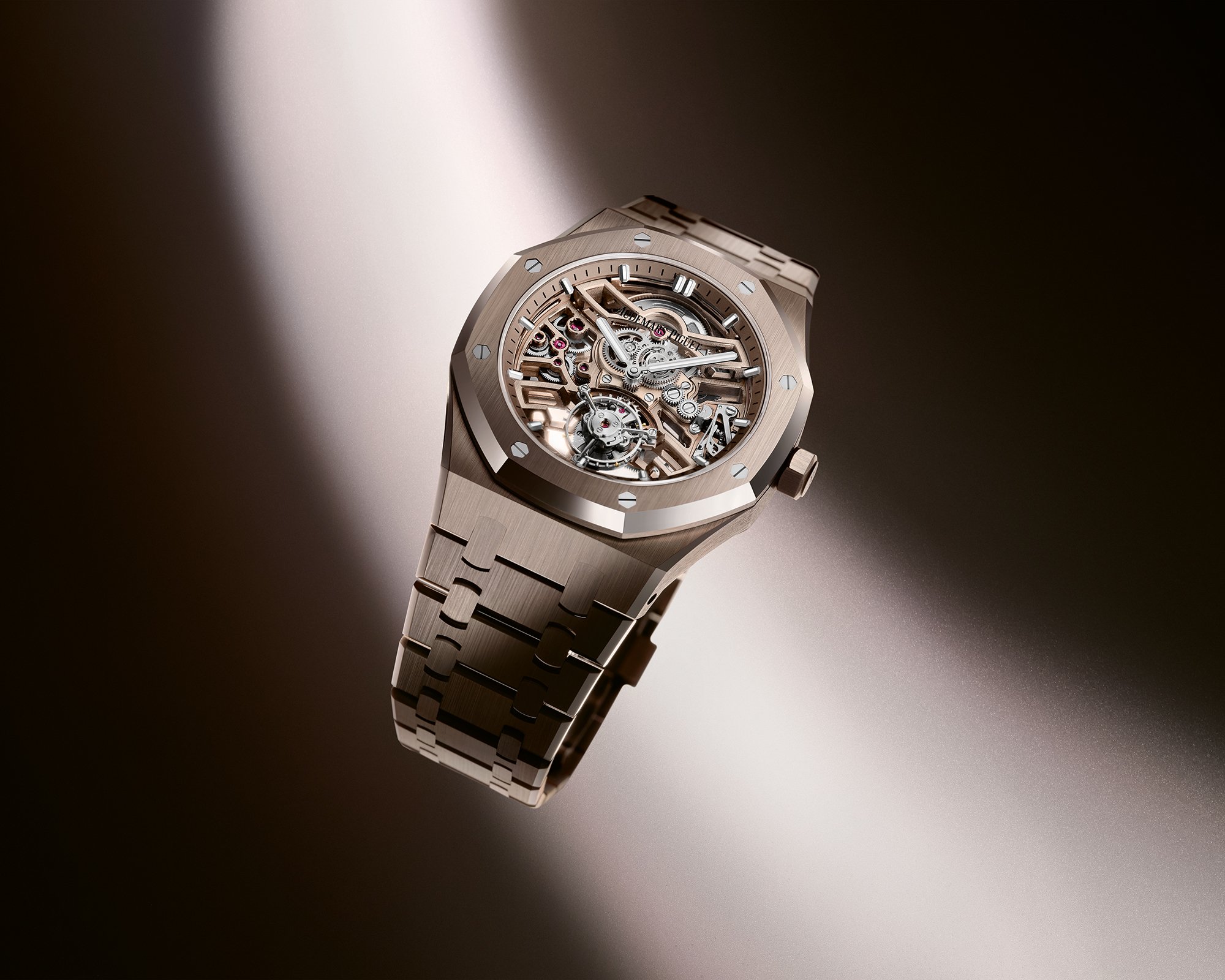ith sand gold, Audemars Piguet is reviving the creative approach to gold alloys and colours that prevailed for thousands of years until the 1960s”, states Sébastian Vivas, Heritage and Museum Director at Audemars Piguet. In jewellery and watchmaking, pure gold (24 karat) has often been combined with different metals such as copper, silver and palladium to create stronger and more resistant alloys, each endowed with its own colour, hardness and technical properties.
Out of the 567 complicated wristwatches that were cased-up and delivered by the Manufacture between 1882 and 1969, 432 were made in gold (248 in yellow gold, 68 in white gold, 41 in pink gold, 32 in green gold and 43 with no N-specified colour). Before the 1950s, alloys were defined more freely, leading to great variation in terms of composition and colour. In other words, two 18-karat “yellow gold” watches often did not have the same yellow hue. The increasing need for uniformity across the watchmaking sector led the “Normes Industrielles de l’Horlogerie Suisse” to establish composition standards in 1966 for 18-karat gold alloys, which stabilised their colours.
-

- A page devoted to Audemars Piguet gold watches in a 1985 issue of Europa Star
Audemars Piguet is now reviving its pre-1960s tradition with the launch of “sand gold”. This 18-karat gold alloy, named after sand dunes in the sunlight, combines gold with copper and palladium for a warm rendering. Hovering between white and pink gold, its colour changes depending on the angle and quality of the light, thus offering a variety of aesthetic possibilities. Thanks to their composition (75% gold, 25% other metals), 18-karat gold alloys are more durable than pure gold, as the addition of other metals makes them harder and more resistant to deformation. Yet their high amount of gold confers a deeper and richer colour than less pure alloys.
The Manufacture premieres this precious metal with the launch of a new Royal Oak Selfwinding Flying Tourbillon Openworked in 41 mm. To complement the new gold case and bracelet, Audemars Piguet developed a matching sand-gold-toned hue to adorn the openworked bridges and mainplate of Calibre 2972, whose multilayered architecture takes centre stage on both sides of the watch. This new galvanic colour sits in subtle contrast with the rhodium-toned components of the movement’s inner workings to create a unique 3D effect. The result is a harmonious scene blending technical complexity with contemporary design.

As well as reconnecting with a rich heritage in gold alloys, Audemars Piguet is also furthering its bold experimentation with materials. After helping stainless steel to a new status in the watch industry with the Royal Oak (Model 5402) released in 1972, whose exuberant price tag placed it on a par with gold watches, the Manufacture introduced gold models four years after its launch. The first Royal Oak model to incorporate gold was the Royal Oak II (Model 8638), the 29 mm women’s version designed by Jacqueline Dimier, in 1977. From 1979, nearly three-quarters of the Royal Oak watches were partially or entirely made of gold.
Less common at the time, pink gold appeared in the Royal Oak collection in the mid-1980s and slowly gained ground across the Manufacture’s collections. In the 2000s, the demand for yellow gold watches faded in favour of models in pink gold, whose subtle yet warm hues conquered the heartsof a new generation. Today, pink, white and yellow gold are commonly used throughout the watchmaking industry, alongside other proprietary 18-karat alloys, such as the new sand gold introduced by Audemars Piguet.
-

- First released in 2022 for the Royal Oak’s 50th anniversary, Calibre 2972 combines a selfwinding mechanism with a flying tourbillon. Its highly stylised and multilayered openworked architecture has been designed to offer symmetry while creating a unique 3D effect.
On the Royal Oak Selfwinding Flying Tourbillon Openworked, the sand gold case and bracelet are finished with the Manufacture’s trademark alternation of satin brushing and polished chamfers. The broad mirror-polished bevels of the octagonal bezel and the chamfers adorning every link and stud of the tapering bracelet accentuate the play of light across this precious material. Sand gold has opened up new creative horizons for Audemars Piguet.







